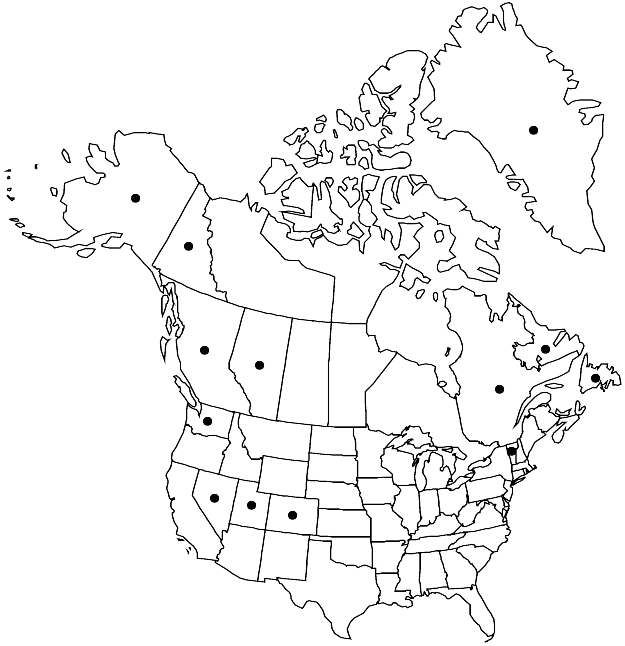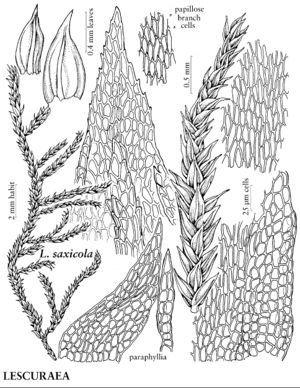Lescuraea saxicola
in P. G. Lorentz, Moosstudien, 144, 147, 149. 1864.
Stems golden or orange with age, weakly appressed to substrate, branches many, curved to erect, often hooked at apices; paraphyllia not much branched, sometimes nearly absent. Stem leaves not catenulate, irregular, asymmetric, weakly falcate-secund, lustrous, weakly to strongly concave, distinctly 1 (or 2)-plicate, 0.7–1.4 mm; costa orange at least at base, distal abaxial surface serrulate; alar cells smooth, walls thin, region small; proximal laminal cells usually smooth; medial cells 14–50 × 4–7 µm, slightly shorter and wider proximally; apical cells strongly prorate. Branch leaves with medial and distal laminal cells more strongly prorulose. Seta yellow-orange, slender, flexuose. Capsule yellow-orange to red-brown, 1–2 mm; exostome teeth not bordered.
Phenology: Capsules rare, mature summer (Jul–Aug).
Habitat: Granitic or sandstone boulders, outcrops, exposed mineral soil, seepage areas in subalpine and arctic-alpine regions
Elevation: moderate to high elevations (200-3400 m)
Distribution

Greenland, Alta., B.C., Nfld. and Labr., Que., Yukon, Alaska, Colo., Nev., Utah, Vt., Wash., n Europe, Asia (China, India, Japan, n Russia).
Discussion
Lescuraea saxicola is distinguished from most species of Pseudoleskea by its elongate, thin-walled medial laminal cells, and from P. baileyi in lacking a hair-point.
Selected References
None.
